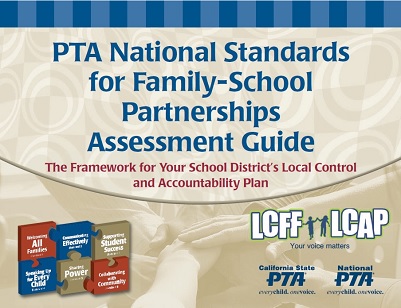Strong family-school partnerships make big differences. When families and schools work together, our kids win.
PARTNERS IN SUCCESS
- At school — Family-school partnerships equal academic improvement. It’s a powerful strategy for achieving whole-school goals, such as reading at grade level, closing achievement gaps and motivating students for long-term success. Teachers and administrators can strengthen efforts by involving families in two-way, regular and meaningful conversations about students, giving parents good information about supporting our children and how grade-level expectations affect kids’ academic progress.
- At home — Families and caregivers become partners in success by creating a culture of authentic engagement in school life. Keeping kids focused on school readiness, learning and homework shows commitment to our children’s academic growth and development.
- Together! — Sharing ideas. Setting goals. Initiating activities. Monitoring efforts. These investments of time and effort pay huge dividends when we all work together for our children’s success.
NATIONAL PARTNERSHIP STANDARDS: TOOLS YOU CAN USE
 PTA has partnered with education leaders to develop National Standards for Family-School Partnerships. By focusing on what we can all do together to support students’ achievement, these research-based blueprints make it easy and effective for families, educators and community members to work toward our shared goals:
PTA has partnered with education leaders to develop National Standards for Family-School Partnerships. By focusing on what we can all do together to support students’ achievement, these research-based blueprints make it easy and effective for families, educators and community members to work toward our shared goals:
1 – Welcoming all families into the school community — Families are active participants in the life of the school, and feel welcomed, valued and connected to each other, to school staff and to what students are learning and doing in class.
2 – Communicating effectively — Families and school staff engage in regular, two-way, meaningful communication about student learning.
3 – Supporting student success — Families and school staff continuously collaborate to support students’ learning and healthy development both at home and at school, and have regular opportunities to strengthen their knowledge and skills to do so effectively.
4 – Speaking up for every child — Families are empowered to be advocates for their own and other children, to ensure that students are treated fairly and have access to learning opportunities that will support their success.
5 – Sharing power — Families and school staff are equal partners in decisions that affect children and families and together inform, influence, and create policies, practices, and programs.
6 – Collaborating with community — Families and school staff collaborate with community members to connect students, families, and staff to expanded learning opportunities, community services, and civic participation.
By identifying key aspects of authentic family engagement practices, these six standards provide basic building blocks for stronger family-school partnerships, all of which support student success today for tomorrow’s world. And to help ensure these six standards guide our collective efforts, the PTA has created a step-by-step Assessment Guide that provides specific goals for each of the standards, as well as indicators for measuring goals. Download the complete guide below, or download a quick summary.
LOCAL CONTROL MAKES SURE WE’RE INVOLVED
The new Local Control Funding Formula (LCFF) actually requires school districts to involve parents and caregivers in planning and decision-making to improve local schools.
The Local Control Funding Formula (LCFF):
- Requires your school district to focus on eight key areas that help all students succeed.
- Provides extra funding for students with greater challenges.
- Gives your district more flexibility for how to spend its money to improve local schools.
In their Local Control and Accountability Plans (LCAPs), school districts must address family engagement, which can help improve academic outcomes—especially for disadvantaged students. A recent report by the Public Policy Institute of California (PPIC) identifies promising family engagement strategies from a review of 15 high-need districts in the state, noting that effective strategies are culturally appropriate and aim to support student learning at home.
This is an exciting and important time to get involved! Your voice will truly make a difference in these major decisions affecting your child and your school, so stay informed and keep in touch with your local PTA to find out how you can make a difference.